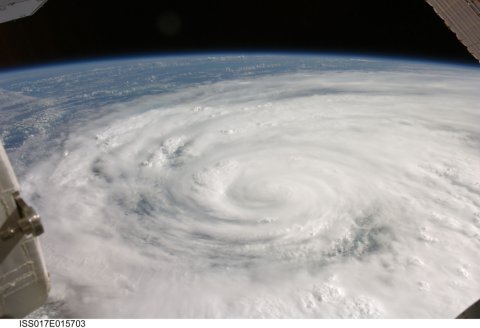

Conclusion
In order for tropical cyclones to develop and strengthen, critical feedback processes must occur. The three conditions that I previously mentioned each play a role in determining whether or not the feedback process takes place.
The role of sea-surface temperatures in the feedback process has to do with the evaporation rate. As I said before, warm sea-surface temperatures lead to large evaporation rates. Large evaporation rates increase the amount of water vapor in the air; a necessary fuel for hurricanes because it releases heat energy in the form of latent heat of condensation. If sea-surface temperatures are too cold, this causes the evaporation rate to drop and the storm to weaken.
Pertaining to water vapor, a moist middle troposphere is also necessary to the feedback process. This is the role of mid-tropospheric relative humidity. A dry middle troposphere is destructive to tropical cyclones and causes even major hurricanes to weaken considerably.
Vertical wind shear has an important role because it affects whether or not a tropical cyclone is able to develop and maintain itself. Strong wind shear can tear convection away from the center of the storm and cause the low-level center of circulation to become exposed. Therefore, weak wind shear is necessary to the feedback process.

Hurricane Ike over Cuba, as seen by the International Space Station, on September 9th, 2008. (Courtesy of NASA.)
This feedback process is what allowed Ike to develop and strengthen into a major hurricane. All the needed ingredients for the feedback process worked together for explosive intensification, with Ike going from a Category 1 to Category 4 in less than 24 hours.



